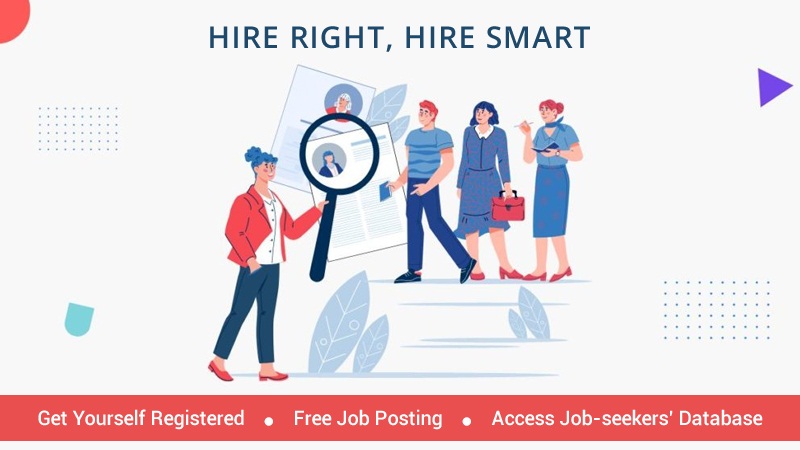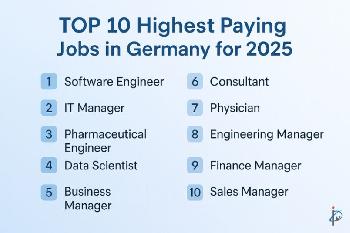
The world of business is always in a state of constant change. Its standard success measure beats the quality of employees. For vision-driven leaders, the embracement of a team made up of skilled professionals is key to strategic success.
This comprehensive guide discloses the sophisticated fabric of strategic hiring, revealing a roadmap to talent acquisition success. Businesses can have an upper hand in finding the best talents by utilising employee referral program potential.
Creating appealing post job ads and dealing with a mountain of online resumes can be quite difficult. Continue reading to learn every smart move that takes you one step closer to your dream team.
Unleashing Talent through Employee Referral Programs
In seeking a quality team, leaders see in referral programs the ability to change. A developed program acts as a dynamic channel for talent acquisition. It leverages the current networks and encourages collective thinking.
Through the use of incentives and bonuses, organisations allow their employees to share information about open positions with personal contacts. It encourages a collective effort where workers actively participate in organisational growth.
Apart from immediate recruitment, the importance of employee referral schemes grows a feeling of ownership and involvement among existing teams. It brings everyone back to the organisation's interests for an exciting professional community.
Crafting Irresistible Job Descriptions: A strategic look at talent acquisition
The first canvas that potential candidates view in their recruitment art consists of job descriptions on free job posting sites. Therefore, creating an excellent job description is more than just a cliché. It is the art that fascinates and attracts top candidates to imagine themselves as valuable members of dynamic teams. Here are key strategies to elevate your job descriptions and find candidates for jobs.
1. Give Titles That Spark Interest
The first element to consider in crafting an appealing job description is creating titles that one can relate to. Accuracy is important, but injecting just a little bit of thrill can turn even a plain listing into an attractive offer. Titles should not only capture the essence of a role but also appeal to candidates so that they would want more details.
2. Provide a Captivating Summary
In the economy, job seekers rapidly scroll through many job posting free sites. Your summary is an opportunity for you to be distinct. Provide an overview that enthuses the job applicant regarding what is possible regarding this role.
State the duties clearly and highlight how important that position is in a company. This is, in turn, a precursor for a candidate to imagine his or her positive impact.
3. Include Essential Points for Clarity
An attractive job description goes deeper into the fundamentals of essential duties, needed sets of skills, and routine activities. It is a delicate equilibrium between meaningfulness and brevity.
Eligible applicants desire to understand how their abilities match the position and organisation's goals. This clarity is provided by a well-organised description; candidates may be informed about their suitability for the job.
4. Maintain Consciousness with Depth
The principle of brevity is vital in the digital era, but depth should not be neglected. It should be 700 to 200 characters long – enough information that doesn’t oversaturate the reader.
A short but meaningful description provides future candidates with an immediate understanding of the nature of the role. It offers them a clear picture as regards its place within your organisation.
Creating job descriptions that can’t be resisted is not only about attracting candidates. It is also presenting a story so they would imagine themselves in the distant future of your company. It’s a call to be included in something worthwhile and thrilling, establishing the atmosphere of mutually profitable relations.
As companies compete for top performers, the ability to define appealing job descriptions becomes a competitive advantage. Various sites allow you to post job posts to hire candidates for free.
Navigating Online Resumes: A Strategic Dip into the Talent Pool
During the digital age of recruitment, online CVs become a gold mine for companies searching for perfect candidates. This allows you to unearth treasures that are not actively seeking employment but have the qualities needed for organisational accomplishment.
Search on specialised job boards and platforms helps simplify the search process by looking for specific skills and qualifications. Make use of sophisticated search filters offered by modern online resume databases. It will help you quickly narrow down the candidates based on experience, education levels and skills. Engages candidates through post-job free professional networking sites such as LinkedIn. Here direct connection replaces the typical resume. Use keywords and skill-based searches to find candidates with the necessary expertise.
Navigation through online resumes makes it an active adventure of exploration. It ensures that exploring the talent and skill-based workforce gets performed promptly.
Integration and Implementation: Harmonizing Recruitment Strategies
The magic happens not with the mere success of unlocking talents through employee referral programs and crafted effective job descriptions. It rather occurs by how they integrate well into a larger recruitment scheme.
Central to this therefore is coordination. An approach in which all aspects of the system are aligned with organisational goals and culture.
Create an employee referral program that fits comfortably into the culture of your business. Ensure job descriptions are consistent with organisational values. Post a job and easily navigate resume databases online while making sure there is collaboration among employees. The paradigm of this synchronised symphony is evolving strategies, which require continuous monitoring and optimization.
Conclusion
Talent recruitment has always been hard. Employee referral programs in combination with engaging job ads and resume routes online are revolutionary. As these strategic elements intertwined with the fabric of organisational culture, they rebrand hiring as a shared experience.
The ending is not merely the result of successful hires, but a process that improves with time.
Through culture-promoting collaboration, a matching strategy with values and optimising processes, businesses embark on an enduring pathway toward success. The harmonious fusion of these elements is not just an ending. It represents the beginning of a world in which every hire becomes part and parcel of a living tapestry. This tapestry reflects on organisational perfection.








ADD COMMENT